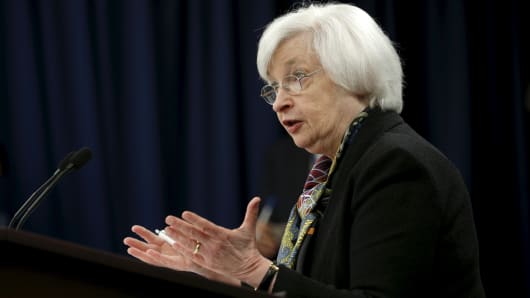The Fed's focus on inflation, or the lack thereof, appeared to be the main driver behind the decision to not hike rates in March. Despite continued improvements in labor market indicators, wage growth has not picked up meaningfully, which is a necessary catalyst for rising inflation and perhaps the biggest concern for policymakers. Wage data will likely remain a focus for the Fed as well as the markets, with direct implications on U.S. break even yields going forward. Interestingly the Fed's median 2016 core PCE inflation projection stood unchanged at 1.6 percent for the end of 2016, even though this measure already rose to 1.7 percent ahead of the meeting.
The Fed was right not to act. While inflation could easily be at 2 percent by the year end, this does not mean inflation will accelerate from there. It did not accelerate much in the last cycle. And it probably won't accelerate much this cycle. It might not be what the text books say, but when was the last time the text books worked?
Despite the more dovish than anticipated tone from the Fed, we still believe economic growth will accelerate modestly from here within the U.S. The U.S. consumer continues to benefit from tighter labor markets, low unemployment and low lending rates, while business spending outside of the energy and mining sector continues to grow. The deflationary impact from lower energy prices is a tailwind for consumers, but more importantly the housing market continues to heal and support household formations. However, it is unlikely that inflation will accelerate meaningfully until slack in the labor market is taken out and/or we start to see rising unit labor costs.





